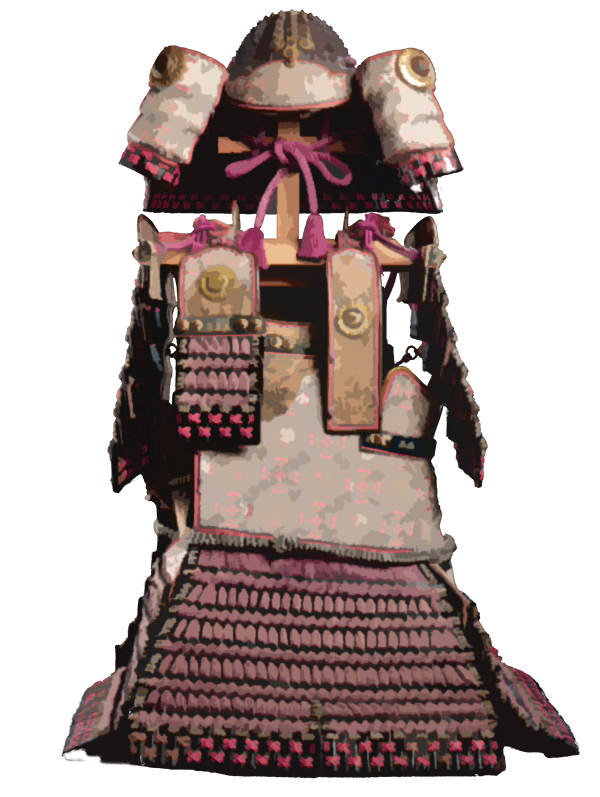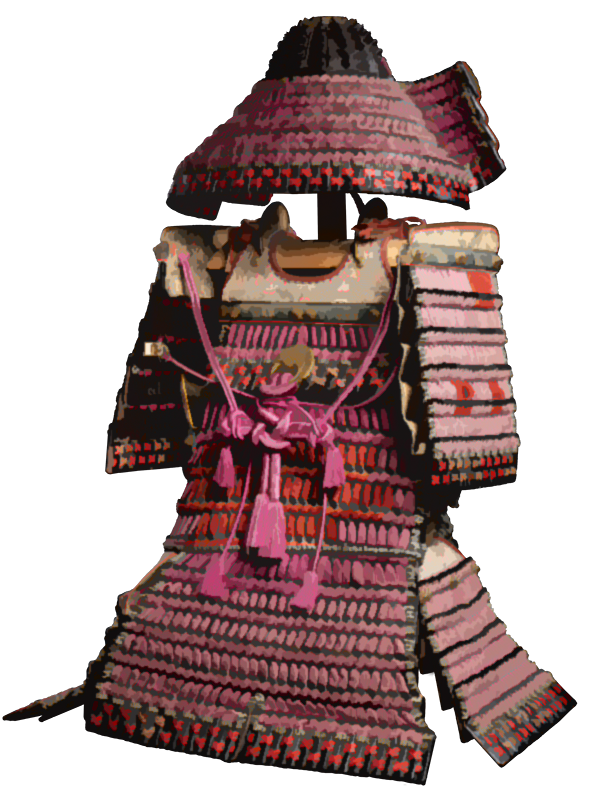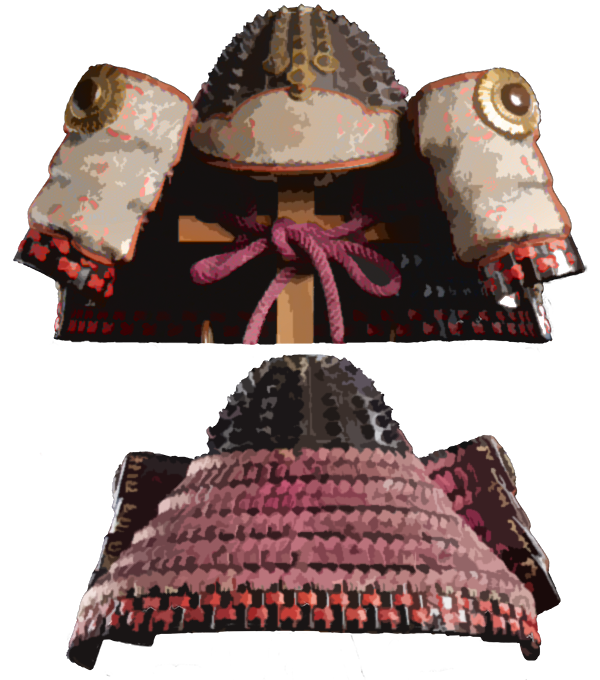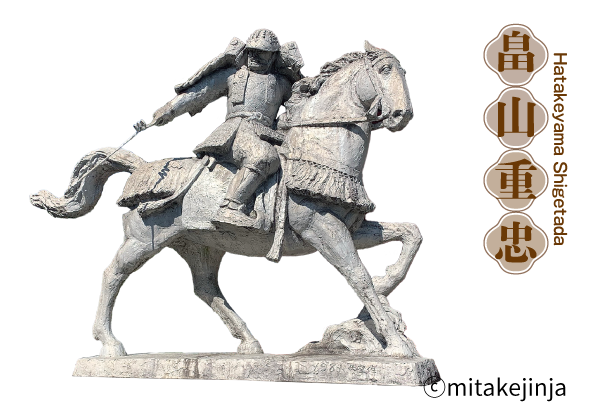
According to shrine records, it was dedicated as a votive offering in 1191 by Hatakeyama Shigetada.
O-yoroi was a formal suit of armor worn by high-ranking samurai. It is also known as shikisho-no yoroi (suit of armor for formal ceremonies).
*Heian period: 794 - 1185
Eighth shogun Tokugawa Yoshimune, and tenth shogun Ieharu inspected the suit of armor at Edo Castle during the Edo period, and it was even mentioned in the Shukojisshu, published in 1800.
*The Shukojisshu is a catalog of antiquities and old works of art compiled by Matsudaira Sadanobu.

This shows the superiority of the dyeing technology of the Heian period over that of the Meiji period.
The hachi is an igaboshi helmet with rivets. The shikoro consists of plates on the back and sides of the helmet to protect the neck and shoulders of the wearer, while the sides curve gently around to protect the face.

The helmet was not only functional, but also testifies to the delicate elegance of noblemen in the Heian period. The suits of armor changed over time, to express in gorgeous ways the splendid bravery of the samurai.

Standing before the Akaito Odoshi Yoroi today, the armor conjures up images of Shigetada's gallantry, who is also known for his devotion to the gods of Mt. Mitake in Musashi Province.
In the Azuma Kagami, a historical chronicle of the Kamakura shogunate, he is described as being a handsome and talented musician, with such strength that he could carry huge rocks.
During the Battle of Ichi-no-Tani, famous for Miyamoto no Yoshitsune's Hiyodorigoe-no Sakaotoshi (surprise attack in Hiyodorigoe by running down a hill), he is said to have carried his precious horse down the cliff on his back so that it would not be injured.
He was called the paragon of a samurai for his dependable character.
![[National treasures] Akaito Odoshi Yoroi [with helmet and large shoulder guards], Designated in November 1952](../images/akaito_title_en.png)